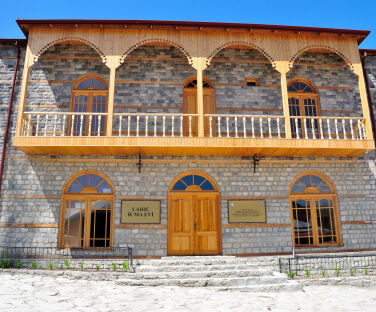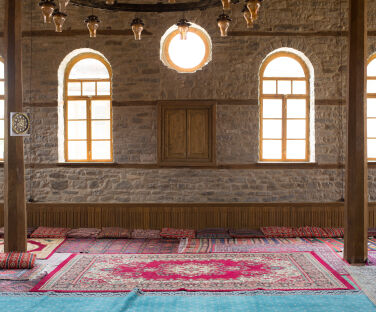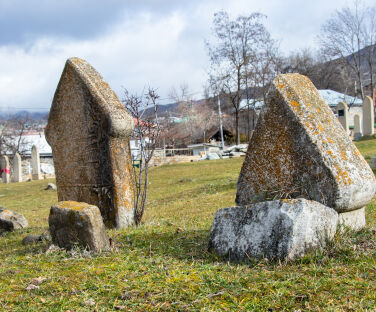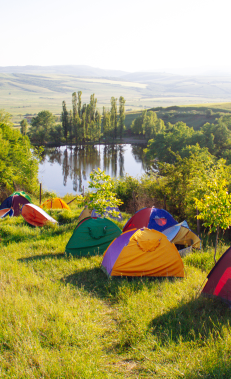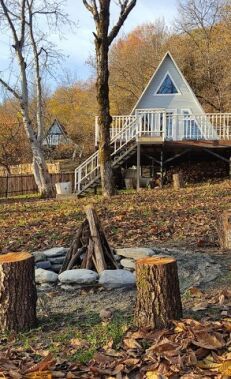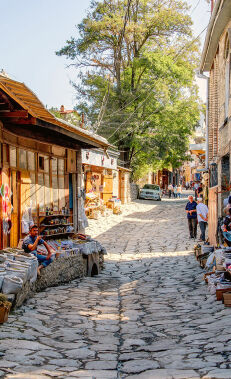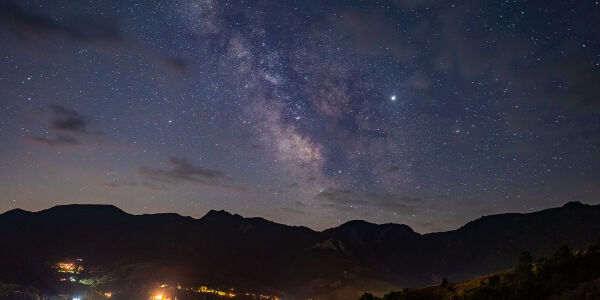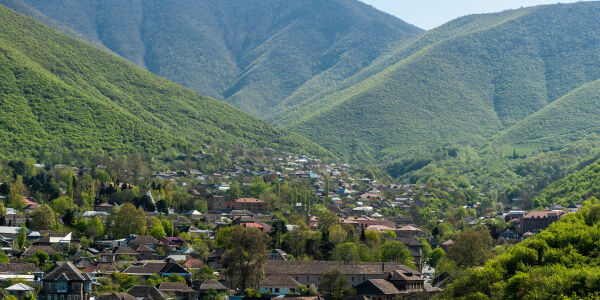stone streetsalive with history
An abundance of archaeological finds, including stone knives, arrowheads and clay pots, found around Lahij testify to the antiquity of this famous mountain village, which has been inhabited for about 2,000 years. You can discover these ancient items, and many more, at the Lahij Museum of History and Ethnography, where the central exhibit is a large 18th century coppersmith’s bellows.
Those interested in the traces of Caucasian Albanian history, meanwhile, can hike to the ruins of the Girdiman fortress. The route extends to the top of Mt Niyaldag, and on the way back goes via a collection of waterfalls known locally as the Seven Waterfalls.
Located on a Silk Road caravan route, crafts and trade flourished in Lahij, which was an important and advanced settlement during the Middle Ages. Among the special architectural features of the village are the lovely stone paving of the streets and the ancient underground sewers made of river stone whose structure and construction technique still amaze experts today.
There are a number of architectural monuments in Lahij worth seeing. In the past each of the village’s seven neighbourhoods had its own mosque and bathhouse (hammam). Today five mosques still stand, relics of the 18th and 19th centuries, and are named after the neighbourhoods where they are located: Badoyun Mosque, Agholu Mosque, Zavaro Mosque and the Ashagi and Yukhari Aragit mosques. Another attraction is the ruins of a large 72-room caravanserai, believed to have been built in the 18th century. Elsewhere, the 19th-century Haji Molla Hussein bathhouse is still used by local residents.
Another interesting page in the history of Lahij is connected with the founder of the Azerbaijan Democratic Republic (1918-1920), Mammad Amin Rasulzade. Faced with persecution by the Bolsheviks after the collapse of the Republic, Rasulzade escaped to Lahij and found refuge there for some time, even writing his popular book "Siyavush of Our Century" here. Today, several houses in the village are known as "Rasulzade's house" because he often changed his place of hiding.
A visit to Lahij will allow you to discover its historical past hidden among charming stone streets.




